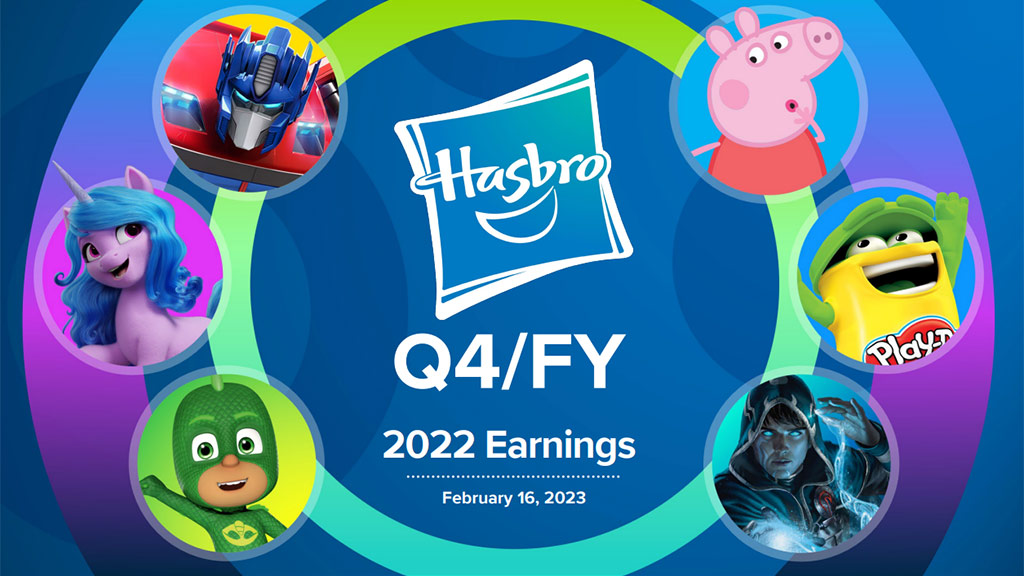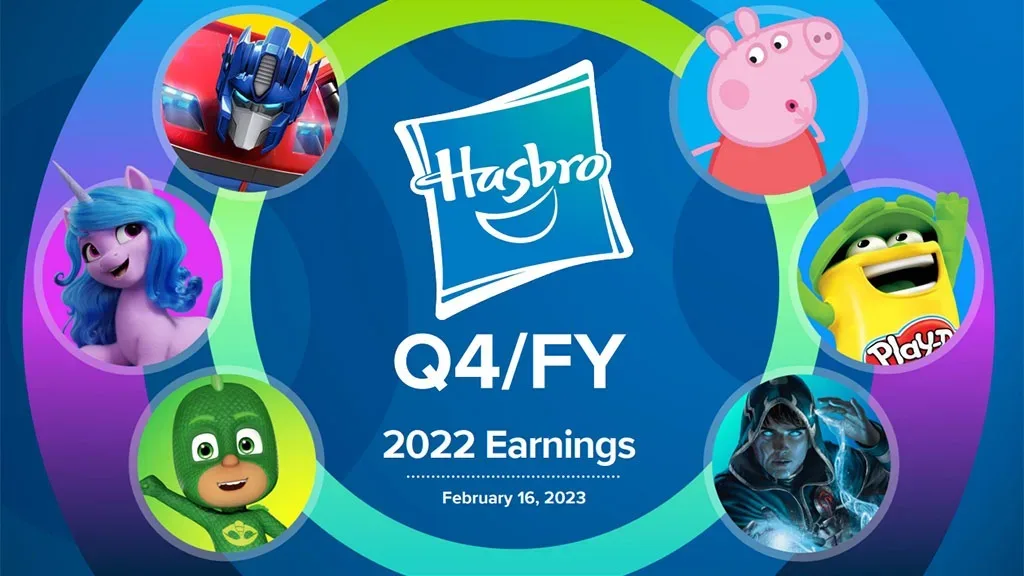
Following a preliminary earnings report last month amid layoffs and leadership changes, Hasbro confirmed its fourth quarter and full-year earnings for 2022.
As previously reported, Hasbro was pummeled in Q4 with a 17% decline in year-over-year sales despite earning $1.68 billion in revenue. For the full year, revenue fell 9% to approximately $5.86 billion.
Wizards of the Coast and Digital Gaming segment revenue of approximately $1.33 billion marked a 3% year-over-year gain; Consumer Products segment revenue of approximately $3.57 billion, was down 10% year-over-year; and Entertainment segment revenue of approximately $959 million was down 17% year-over-year.
“As we announced previously, our fourth quarter and full-year 2022 results came in below our expectations,” says Hasbro CEO Chris Cocks. “Despite this, we delivered our first billion-dollar brand in Magic: The Gathering and another record year at Wizards of the Coast and Digital Gaming, we grew key investment areas including licensing and direct-to-consumer, and we improved adjusted operating profit margin. We also reduced owned and retail inventory levels from the third quarter peak and we are working to reduce them further this year. Only a few months in, we have made meaningful progress in implementing Blueprint 2.0 with a heightened focus on innovation, data-driven investment in key brands, and disciplined cost management.”
Hasbro’s 2023 guidance calls for a mid-single digit decline in its consumer products business, which includes toys and games. The company says that this falls in line with the overall toy industry expected to be flat or slightly down this year. Conversely, Hasbro expects mid-single digit revenue growth in Wizards of the Coast and Digital Gaming this year.
Cocks notes that there are approximately $300 million in revenue headwinds ahead from exited licenses, brands, and markets. One major loss on that front was the Disney Princess and Frozen license which went back to Mattel this year.
“For 2023, we have a focused plan to grow share in our key categories and further improve our margins. We are capitalizing on a fantastic entertainment slate, including Dungeons & Dragons: Honor Among Thieves in March and exciting new product launches,” Cocks says. “Our strategy is centered on what makes our brands great: play, supported by compelling storytelling and disciplined brand management.”
Hasbro’s Blueprint 2.0 strategy largely positions the company as a licensor as it seeks to place a number of its portfolio and legacy brands with smaller, privately-held toymakers, including Basic Fun! (Tonka, Littlest Pet Shop, Lite-Brite), PlayMonster (Koosh, Spirograph, Glo Friends, Weebles), and Just Play (Easy-Bake, FurReal Friends), among others. Last year, Hasbro’s licensing business spiked 5% while its direct-to-consumer Hasbro Pulse business grew by 15%.
Some bright spots for Hasbro last year included Peppa Pig and Play-Doh, and the company says that its Marvel portfolio had a record year paired with revenue growth for Star Wars and Fortnite products. G.I. Joe and Power Rangers were also called out for growth that was offset by declines elsewhere in the portfolio.
Looking ahead, Hasbro is focusing on building “fewer, bigger brands,” including Transformers, Dungeons & Dragons, Magic: The Gathering, NERF, Peppa Pig, Play-Doh, and Hasbro Gaming.
For more on Hasbro’s 2023 product launches and plans, check out the next issue of The Toy Book — The BIG Toy Book — available Feb. 28!

